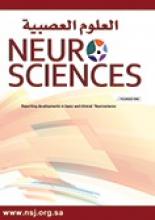Abstract
OBJECTIVE: Variations in the shape and size of the cerebral falx can embarrass the surgical treatment of lesions in and around the falx. In this study, anatomy and morphometry of the cerebral falx in adult cadaveric specimens were examined to enable easy approach during surgery.
METHODS: Fifty-two adult cadaver cerebral hemispheres with dura from the cadaver collection of the Department of Anatomy, Ege University, Faculty of Medicine were examined in 2003. The cerebral falx was observed in 3 different types. The heights of the cerebral falx and the heights of interspace between the lower margin of the cerebral falx and corpus callosum were measured.
RESULTS: The most frequently observed type of cerebral falx was Type I based on the classification of Jiang and Jia. The average heights of the cerebral falx measured 21.3 mm anteriorly, 25.7 mm in the middle and 45.6 mm posteriorly in Type I; 27.9 mm anteriorly, 30.5 mm in the middle and 47 mm posteriorly in Type II; 28.7 mm anteriorly, 36.5 mm in the middle and 44.1 mm posteriorly in Type III. The average heights of the interspace between the lower margin of the cerebral falx and corpus callosum were 14.1 mm anteriorly, 12.4 mm in the middle and 2.1 mm posteriorly in Type I; 6.3 mm anteriorly, 7.2 mm in the middle and 1 mm posteriorly in Type II; 2.3 mm anteriorly, 1.8 mm in the middle and 0.6 mm posteriorly in Type III. Natural defects were found on the cerebral falx in 12 (23%) specimens.
CONCLUSION: Measurements of the cerebral falx provide useful information for neurosurgeons in treatment of lesions involving the region. This study presents more detailed data compared to those reported in the few previously published papers, results differing due to differences of the populations investigated.
- Copyright: © Neurosciences
Neurosciences is an Open Access journal and articles published are distributed under the terms of the Creative Commons Attribution-NonCommercial License (CC BY-NC). Readers may copy, distribute, and display the work for non-commercial purposes with the proper citation of the original work.






